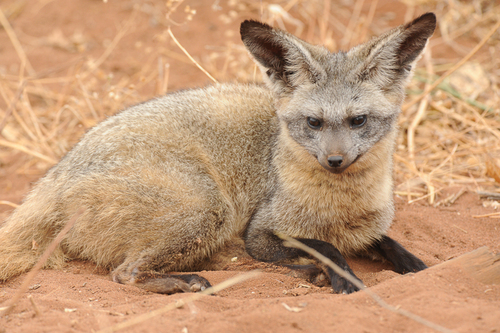
Bat-eared Fox
With its oversized ears and nocturnal habits, the bat-eared fox (Otocyon megalotis) is a marvel of adaptation. Thriving in African savannas, it keeps termite populations in check, relying on sound to hunt. Its monogamous nature and role as a pest controller highlight its ecological importance.
10-13 years
Lifespan
Black, Tan, Dark, Grey
Color
Low
Aggression
32 mph
Top Speed
Least Concern
Conservation Status
Stable
Population Trend
Characteristics
The bat-eared fox, Otocyon megalotis, is a small canid native to the African savannas. It is recognized by its disproportionately large ears, used for thermoregulation and detecting insects, its primary diet. This nocturnal forager plays a crucial role in controlling termite populations, showcasing unique social behaviors with its monogamous pair bonds.
Distribution Range of the Bat-eared Fox
The bat-eared fox (Otocyon megalotis) is native to the African continent. It is primarily found in two disjunct regions: the eastern and southern parts of Africa. In the eastern region, it is found in Ethiopia and southern Sudan, extending down through Kenya and Tanzania. In the southern region, it is distributed across Namibia, Botswana, South Africa, Angola, and Zimbabwe.
Bat-eared Fox's Habitat
Environmental Conditions
The bat-eared fox inhabits open, arid, or semi-arid environments. It thrives in short-grass plains and savannas, as well as in areas with sparse shrub cover. These regions typically have low rainfall, with temperatures ranging from mild to hot, depending on the season.
Ecological Niche
The bat-eared fox is adapted to a diet primarily consisting of insects, particularly termites and beetles, which are abundant in its environment. Its large ears are not only for excellent hearing but also for thermoregulation, which is crucial in the hot climates it inhabits. The fox plays a vital role in controlling insect populations, which influences the ecological balance in its habitat.
Copyright @ Nature Style Limited. All Rights Reserved.
 English
English